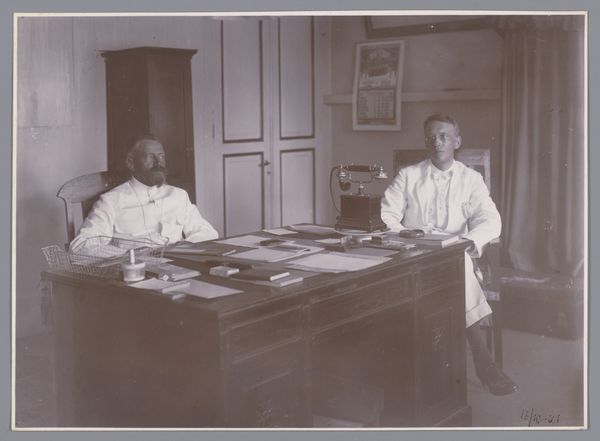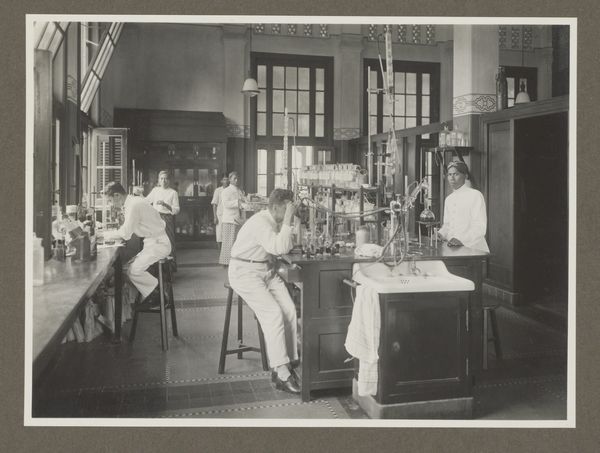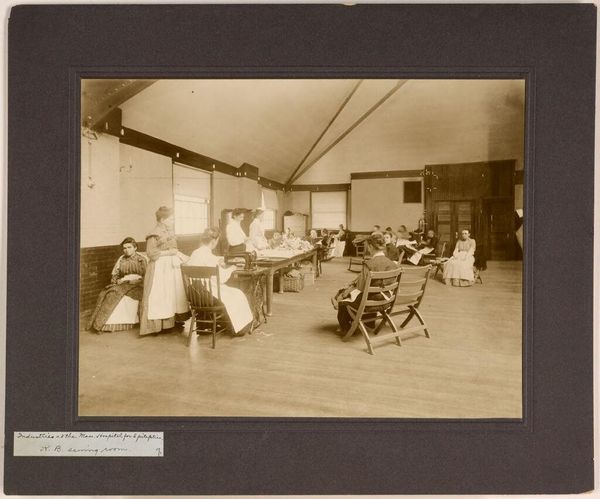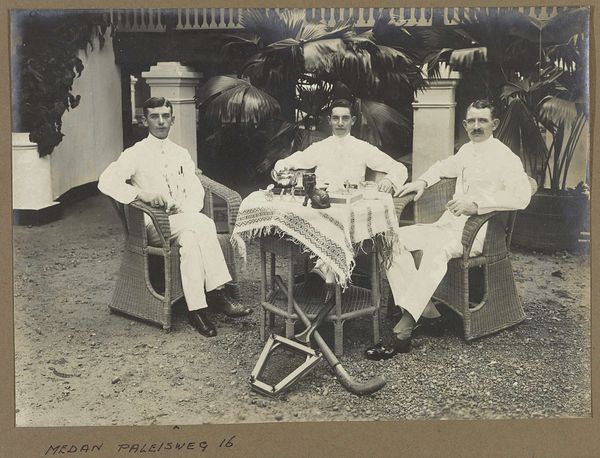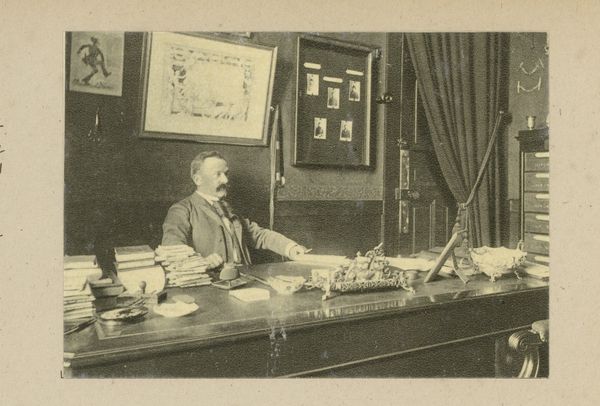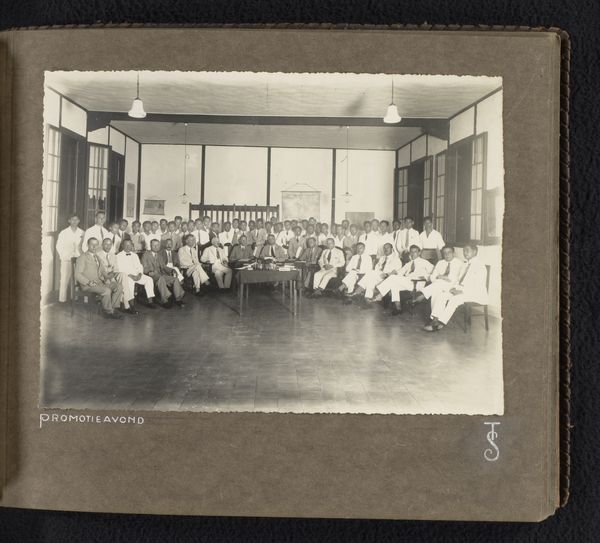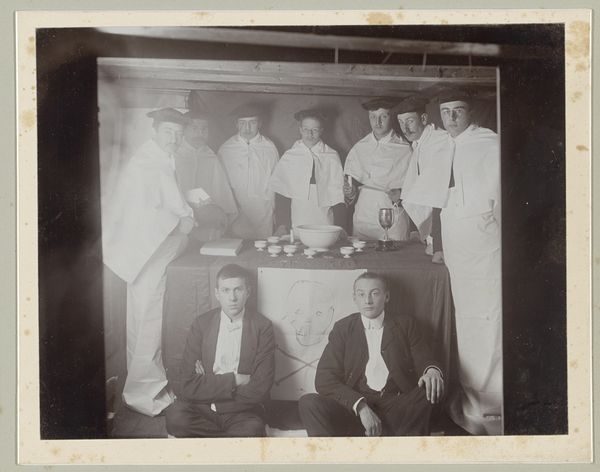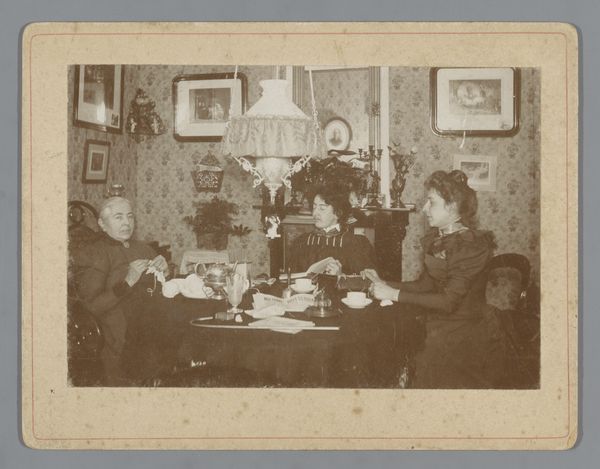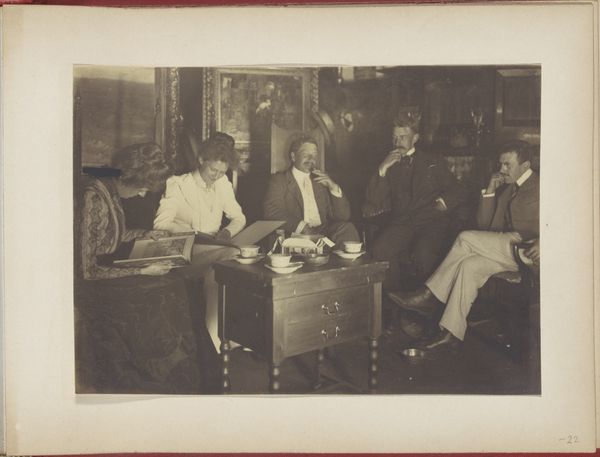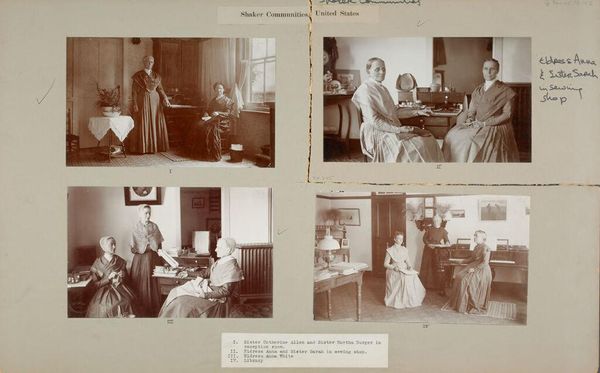
print, photography, gelatin-silver-print
#
portrait
# print
#
photography
#
historical photography
#
historical fashion
#
gelatin-silver-print
#
genre-painting
Dimensions: height 160 mm, width 220 mm
Copyright: Rijks Museum: Open Domain
Curator: Editor: Okay, here we have a photograph entitled "Directeuren Mij Grotius," possibly from 1921, a gelatin-silver print. It looks like a portrait of two men at a desk. There's a sense of formality but also… distance. What do you see in this piece? Curator: Well, immediately my focus is drawn to the materiality of this image. Gelatin-silver prints, by their very nature, are products of a specific chemical process and technological moment. Consider the colonial context implied by the subjects' white attire. It isn't just fashion; it speaks to a system of power and labor, a visual marker of status likely achieved through exploitation of resources and people. What does the quality of light and shadow communicate to you in relation to their appearance? Editor: I see what you mean. The light highlights their crisp, white clothing, almost like an emblem. So, their clothing, even the paper they are handling, represent material aspects that underpin the entire colonial narrative? Curator: Precisely! Think about where those materials were sourced. How were they produced? Who was involved in the labor? And how did the access and control of these things manifest wealth and domination? Editor: I hadn’t thought about it that way. It is not *just* a photograph of two men. The photographic process itself, the desk, their clothing – each object tells a story about the era and the imbalance of labor. Curator: Exactly. It goes beyond just depicting a scene; it unveils a system of production, consumption, and control encoded within the image itself. Editor: That definitely makes me rethink the image and consider the hidden stories behind what is presented so straightforwardly. I really see your point about labor now, that shifts my perspective of similar photographs, as well. Curator: It's a crucial lens when examining historical photography. Considering the social and economic mechanisms behind its production encourages us to understand its larger cultural implications.
Comments
No comments
Be the first to comment and join the conversation on the ultimate creative platform.
